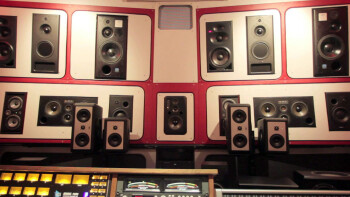In order to approach the critical listening sessions seriously, here are a couple of things you might want to ask yourself while at it. You should focus mainly on two aspects, which I recommend you take on one after the other, so you don't get distracted.
Technical control
Let’s start with a purely technical analysis of your mix. Once you’ve sorted this out it will be much more easier to focus on the artistic aspect of your work. Here’s a list of sensitive points you should check:
- Is the low end under control? Is it muddy? Is it precise and powerful? Is it pinned to the center of the stereo field?
- Is the high end too sharp, tiring or unpleasant to the ear?
- Are the low mids somewhat “sloppy”? Do they stay in place without messing with the rest of the spectrum?
- Are the high mids clear and understandable enough? Are they too “aggressive”?
- Are all frequencies balanced?
- Is the stereo image coherent?
- What about the 3D space?
- Are the main vocals too loud or too soft with regard to the rest of the mix? Are they intelligible?
- Are the main instruments upfront enough without being detached from the rest?
- Is the mix technically sound considering the standard listening conditions of general consumers?
Finally, once done with the playback, take a look at the peak meters of your DAW (channels and Master) to make sure nothing is in the reds. Generally speaking, if you have heeded the advice I’ve given you throughout this series, you shouldn’t have a problem and you probably still have a couple of dBs of headroom on the main bus, which is excellent news for the mastering stage. In any case, it’s better be safe than sorry, so double-check everything just in case…
Artistry
Now analyze your mix from a strictly artistic point of view. It’s no easy task and I won’t lie to you: as far as I’m concerned there is now absolute truth that you can stick to in this regard. Nevertheless, here’s a non-exhaustive list of things you might want to have in mind:
- Does the overall atmosphere correspond to your vision of the mix?
- Does the result serve the purpose of the song?
- Are the emotions conveyed consistent with the original intention of the song?
- Does the track sound lively overall?
- Does the song climax as it moves on?
- Can the mix retain the attention of the listener throughout the entire track?
- Do you like listening to the music?
- Do your answers to the previous questions respond to the listening conditions of the general public?
This aspect of critical listening is certainly the hardest, since it is very subjective, which means you need to remain cold minded to make a fair judgment. That said, you shouldn’t rack your brains too much. It will come easier with experience. In the meantime, you can resort to the tips in the upcoming articles so you can get the best results!

